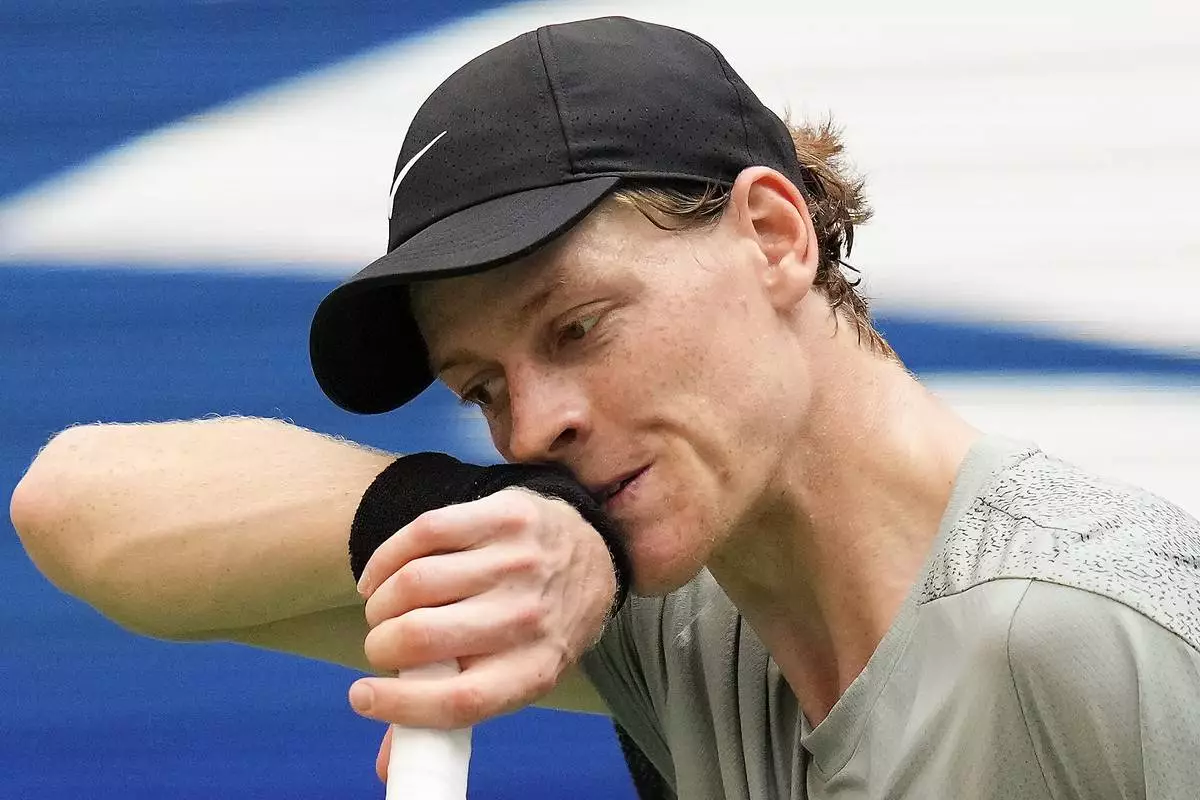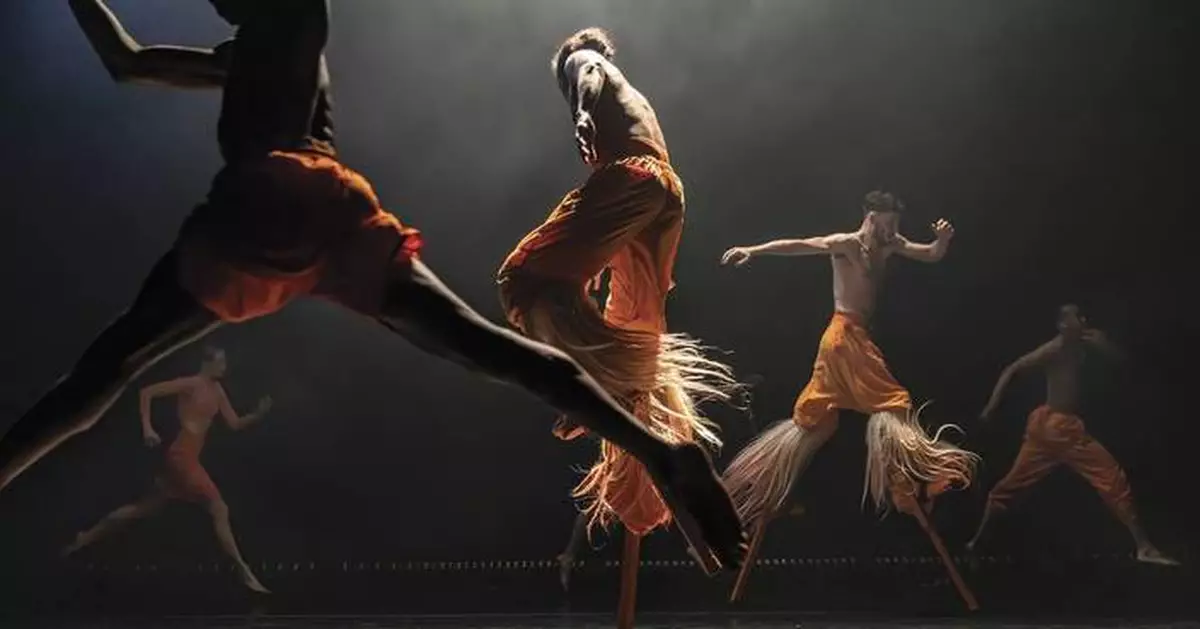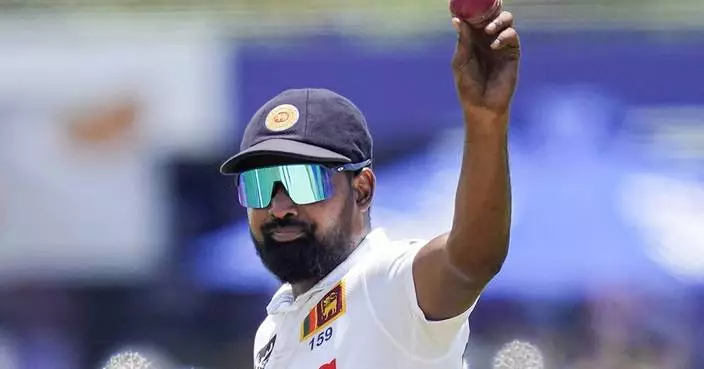NEW YORK (AP) — The eclectic annual Fall for Dance festival is a beloved tradition among dance fans, not least for its $30 tickets — still quite a deal in New York, even if they began at $10 two decades ago.
But the best thing about it is still the variety it brings to the stage, with 15 acts over 11 days this year from artists around the world. This year’s highlights have come from as far as the Kyiv Opera House in Ukraine, and as close as a few blocks away.
You could call it a veritable United Nations of dance — which is exactly how the president of New York City Center, Michael Rosenberg, described it this week, introducing the third of five programs. He didn’t explicitly refer to the ongoing U.N General Assembly happening a bit further east, wreaking its usual traffic chaos.
There was a happier chaos happening onstage, a mishmash of extremely different styles of dance. As usual, the audience seemed to love it all — especially the more out-there elements, like dancers stalking the stage on stilts in the first program, courtesy of choreographer Andrea Miller and her Brooklyn-based Gallim company.
Fall for Dance has always lured a mix of known names — some of them trying out something new – with names unknown to most of the crowd. Among the familiar faces this year so far have been much-loved ballet stars Tiler Peck of New York City Ballet and Herman Cornejo of American Ballet Theatre, both choreographing this time (with Cornejo dancing, too).
The emotional highlight, though, was the two-night appearance of the National Ballet of Ukraine, a troupe that has managed to remain operating in Kyiv despite huge hardship. In its first New York performance in decades, the company opened the festival with “Wartime Elegy,” an evocative piece by one of the world’s leading choreographers, Alexei Ratmansky.
Currently an artist in residence at New York City Ballet, Ratmansky has a deep connection to the material. Born in St. Petersburg to a Russian mother and a Ukrainian father, he grew up in Kyiv. When he premiered “Wartime Elegy” at Pacific Northwest Ballet in Seattle in 2022, he unfurled and held aloft a Ukrainian flag during curtain calls. In program notes for Fall for Dance, he joins the dancers in honoring their colleagues who have fallen in warfare.
The piece, featuring four male and four female dancers, both began and ended on somber tones. But in the middle, men who’d been dressed in black suddenly appeared in folk costumes. The moody (and gorgeous) piano and strings music by Ukrainian composer Valentin Silvestrov shifted to spirited tunes, and the men leaped into folk-style dancing with abandon.
The audience laughed along. But soon the dancers' bodies seemed to be collapsing, as the choreography again reflected pain, not joy. The curtain closed with one woman standing in arabesque, leg raised behind her, as if to say, quite like the troupe itself, that she wasn't going anywhere.
Peck, who has been starting to build an impressive choreographic resume as she continues to lead NYCB as one of its top ballerinas, presented one of three pieces commissioned by the festival: “Piano Songs,” a spirited solo for ABT dancer Aaron Bell, to the music of Meredith Monk. The 81-year-old composer delighted the crowd by appearing for a curtain call.
The highlight of another program was “The Specter of the Rose, by Cornejo, the Argentine dancer who recently celebrated his 25th anniversary with ABT. It was a reimagining of the short Fokine ballet about a young girl who returns from a ball in her gown and dreams of the spirit of the rose, who materializes to dance with her. Here, it was modernized, with Cornejo bare-chested and in jeans, and his partner, sprite-like ABT ballerina Skylar Brandt, in little jean shorts.
The dancing was everything you’d hope from two classical dancers at the top of their game, with Cornejo showing that the years have not diminished his high-flying leaps and turns — even in denim.
The festival continues through Sunday.

This image released by New York City Center shows the Gallim dance company during a rehearsal "Sama." (Rachel Papo/New York City Center via AP)
ROME (AP) — The steroid case involving top-ranked tennis player Jannik Sinner was appealed by the World Anti-Doping Agency, the Montreal-based body announced Saturday.
WADA said it is seeking a ban of one to two years for the U.S. Open champion but indicated that it does not plan to back date an eventual ban — which would mean that Sinner could keep his second Grand Slam title if he is found guilty.
The announcement was made while Sinner was on court against Roman Safiullin at the China Open in Beijing.
Sinner tested positive twice for an anabolic steroid in March but was not banned in a decision by an independent tribunal announced by the International Tennis Integrity Agency on Aug. 20 because the ITIA determined he was not to blame.
Sinner’s accepted explanation was that the banned performance-enhancer entered his system unintentionally through a massage from his physiotherapist, who had used a spray containing the steroid to treat their own cut finger.
WADA said it filed an appeal on Thursday to the Switzerland-based Court of Arbitration for Sport.
“It is WADA’s view that the finding of ‘no fault or negligence’ was not correct under the applicable rules,” WADA said in a statement. “WADA is seeking a period of ineligibility of between one and two years. WADA is not seeking a disqualification of any results, save that which has already been imposed by the tribunal of first instance."
WADA suggested the rules were not followed correctly despite prosecutor Nicolas Zbinden for tennis’ integrity body — which accepted Sinner’s version of events — being a lawyer who regularly works on high-profile cases for the global watchdog, including the successful appeal against Russian figure skater Kamila Valieva.
An appeal verdict at CAS could come quickly — even within just a few months — if the parties agree to cooperate. At least that’s how it worked in another high-profile doping case in tennis involving Maria Sharapova.
Still, the case likely won't be resolved before Sinner begins the defense of his Australian Open title in January.
Sharapova tested positive at the Australian Open in January 2016 for the newly-banned heart medication meldonium. She was banned for two years in June that year by the International Tennis Federation.
The Russian star appealed to CAS, had an appeal hearing in New York before three judges that September, and four weeks later got the verdict that cut her ban to 15 months.
The entire process for Sharapova with CAS took just four months — far shorter than most doping cases, which typically last for about one year. The timeline can stall with the complexities of picking a judging panel, finding a hearing date and parties exchanging documents and evidence from expert witnesses.
During the Indian Wells hard-court event in March, Sinner tested positive for low levels of a metabolite of Clostebol, a banned anabolic steroid that can be used for ophthalmological and dermatological use. It’s the same drug for which San Diego Padres star Fernando Tatis Jr. was suspended by MLB in 2022.
Sinner tested positive again eight days later in an out-of-competition sample.
He was provisionally suspended twice by the tennis integrity body because of those test results, but he successfully appealed twice to an independent tribunal judge and was allowed to keep competing on tour.
Sinner said his test results happened because his fitness trainer purchased an over-the-counter spray called Trofodermin in Italy that contained Clostebol and gave it to Sinner’s physiotherapist to treat a cut on the physiotherapist’s finger. The physiotherapist then treated Sinner without wearing gloves.
The ITIA said it accepted Sinner’s explanation, after 10 interviews with the player and his entourage, and the independent panel agreed at a hearing on Aug. 15.
The tennis integrity body decision did order to Sinner to lose the $325,000 in prize money and 400 rankings points he earned at the tournament in Indian Wells.
Sinner later announced that he had fired his two trainers.
AP Sports Writer Graham Dunbar in Lausanne, Switzerland, contributed.
AP tennis: https://apnews.com/hub/tennis

FILE - Italy's Jannick Sinner gestures after defeating Chile's Nicolas Jarry during the China Open tennis tournament held at the National Tennis Center in Beijing, Thursday, Sept. 26, 2024. (AP Photo/Ng Han Guan, File)

FILE - Jannik Sinner, of Italy, wipes sweat from his face between serves to Mackenzie McDonald, of the United States, during the first round of the U.S. Open tennis championships, Tuesday, Aug. 27, 2024, in New York. (AP Photo/Kirsty Wigglesworth, File)












